Dong Thap
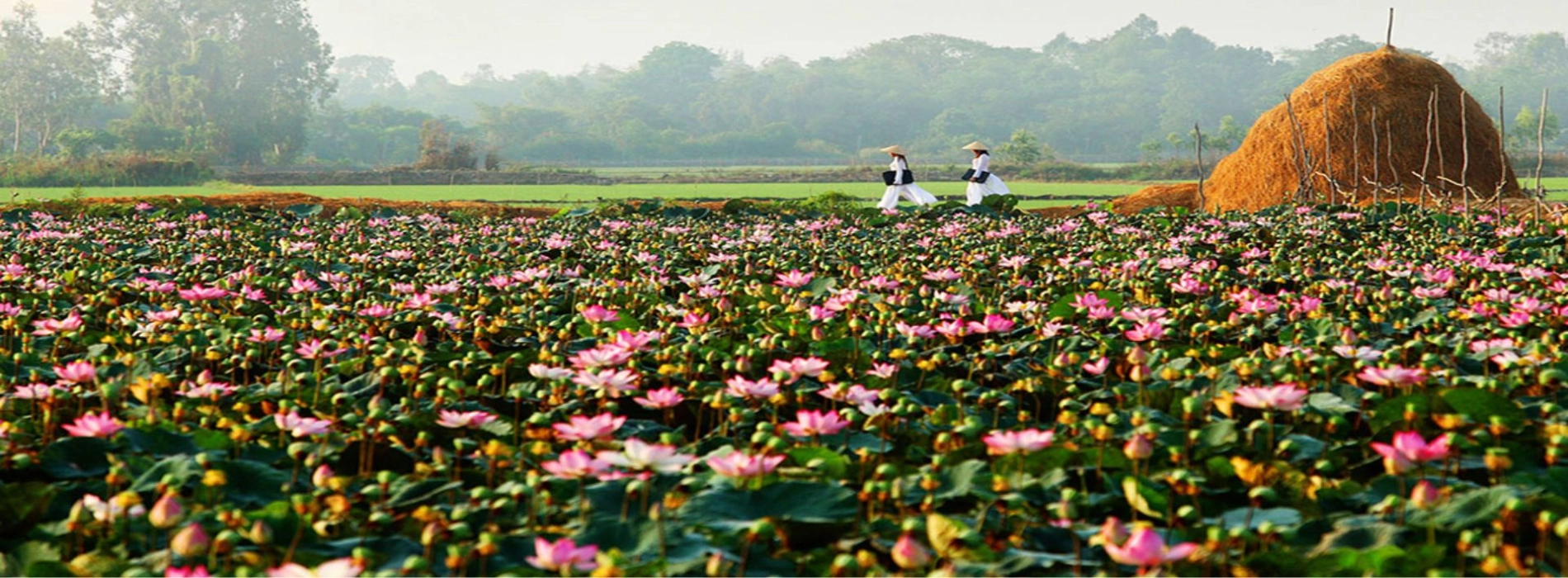
Dong Thap, a hidden paradise in Vietnam's Mekong Delta, is renowned for its peaceful landscapes, green lotus fields, and vibrant bird sanctuaries. Away from the city hustle and bustle of Ho Chi Minh or Hanoi, Dong Thap offers a serene retreat into nature with its extensive wetland ecosystem, cultural villages, and historical sites. A nature enthusiast, history enthusiast, or simply looking for a relaxing retreat, Dong Thap promises an unforgettable experience.

Dong Thap is a hidden paradise of Vietnam (Source: Baothanhnien)
Dong Thap province is located in southwestern Vietnam, within the Mekong Delta, bordering Cambodia in the north. It borders provinces of An Giang, Can Tho, Vinh Long, Long An, and Tien Giang. The province is marked by extensive river systems, alluvial plains, and diversified ecosystems. Its capital and leading transportation and tourist center in the area is Cao Lanh.
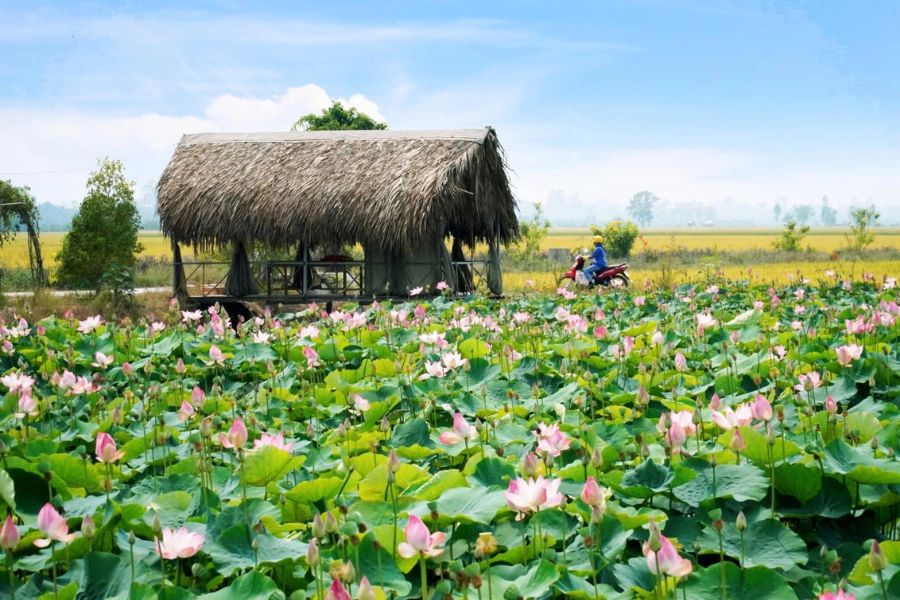
Location of the province (Source: VnExpress)
Dong Thap has a tropical climate divided into two clear seasons: dry season (between November and April) and the rainy season (between May and October). A visit during the dry season is the best time since the weather remains cooler, thus an ideal moment to explore nature reserves and cultural sites.
If you want to witness lotus fields at their best, go between June and August, when the pink lotuses blanket the landscape with a stunning view. But the floating season (September to November) is also a treat as the Mekong Delta floods and the area becomes an enormous water world where you can move around in boats.
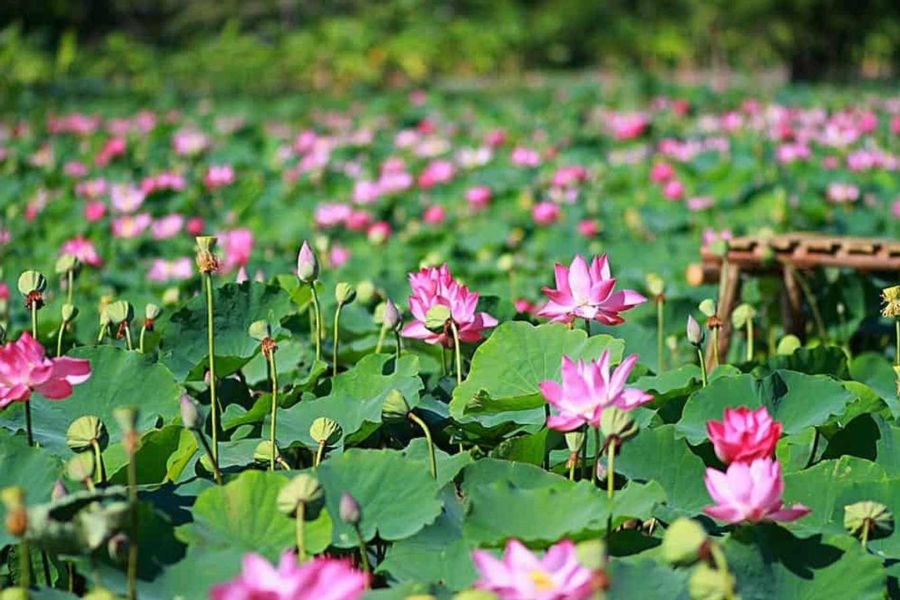
Best time to visit (Source: dulichdongthap)
Tram Chim National Park is the most valuable wetland ecosystem in Vietnam and a bird watcher's haven. Covering over 7,500 hectares of land, the park has more than 200 species of birds and such rare and endangered species as the Sarus Crane. One can take a boat ride along the waterways of the park, contemplate the richness of vegetation and fauna, and soak up the peaceful charm of nature. It is advisable to visit Tram Chim during dry season when water recedes and thus bird sightings are more frequent.

Tram Chim National Park (Source: VinWonders)
Gao Giong Ecotourism Site is a green oasis over 20 km away from Cao Lanh City. It is also referred to as the "green lung" of Dong Thap. The site has vast cajuput forests, scenic canals, and abundant bird and aquatic life. A boat ride on the serene waterways gives one a close touch with nature's beauty. The Gao Giong watchtower offers a bird's eye view of the whole landscape and is a great place to visit for nature lovers and photographers.
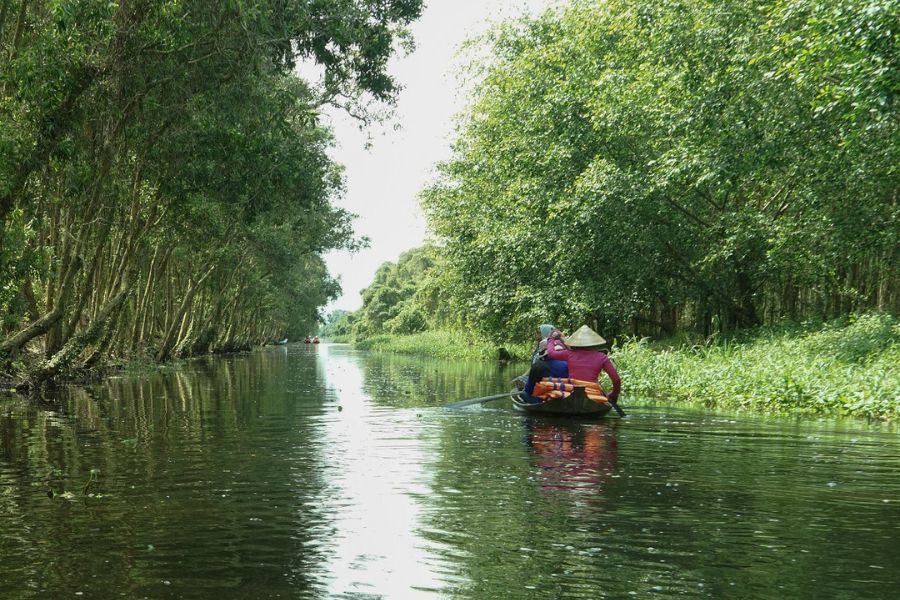
The beauty of Gao Giong ecotourism area (Source: geosnature)
Read more: Southern Vietnam Tour 10 days: Highlights Exploration
Sa Dec Flower Village is one of Vietnam's biggest and most well known flower growing villages. The village covers hundreds of hectares and contains thousands of flowers such as roses, marigolds, orchids, and chrysanthemums. The flowers' colors and scents create a beautiful landscape for visitors, especially prior to the Tet (Lunar New Year) holiday when flowers are in full bloom. Sa Dec is also famous for its historical association with the area's past connection with French author Marguerite Duras, whose work The Lover was inspired by her stay there.
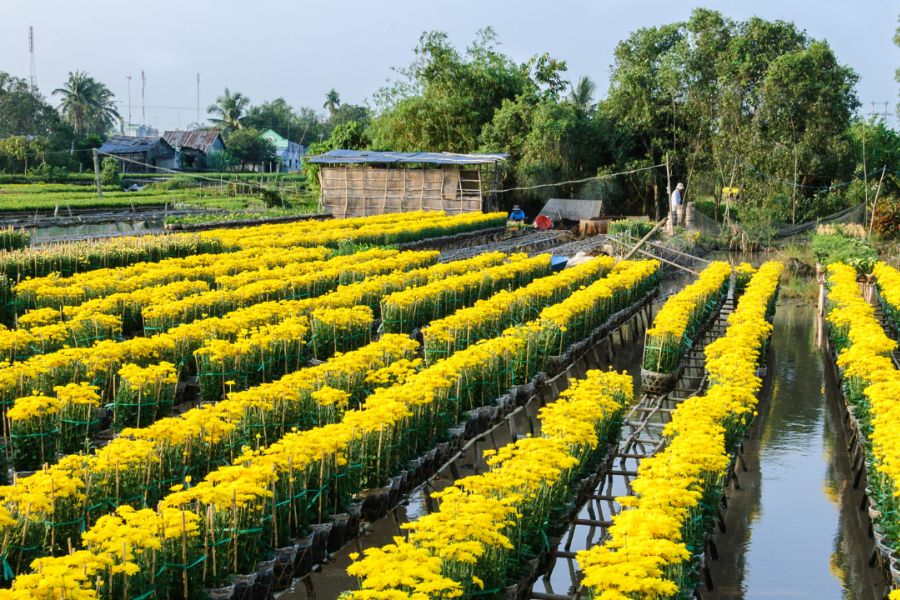
Sa Dec Flower Village (Soure: fmetravel)
By Bus: The most convenient and affordable way of getting to Dong Thap is by bus from Ho Chi Minh City's Mien Tay Bus Terminal. Many different companies offer daily services to Dong Thap's major cities, including Cao Lanh and Sa Dec, that take about 3 to 4 hours.
By Car or Motorbike: For others who want a more independent form of transportation, car or motorcycle rentals can be provided a relaxing drive along the Mekong Delta. The trip lasts about 3 hours through National Highway 1A and Provincial Road DT846.
By Air: Dong Thap has no airport, so the nearest one is Can Tho International Airport, which is 70 km away. From Can Tho, one can take a bus or taxi to Dong Thap.
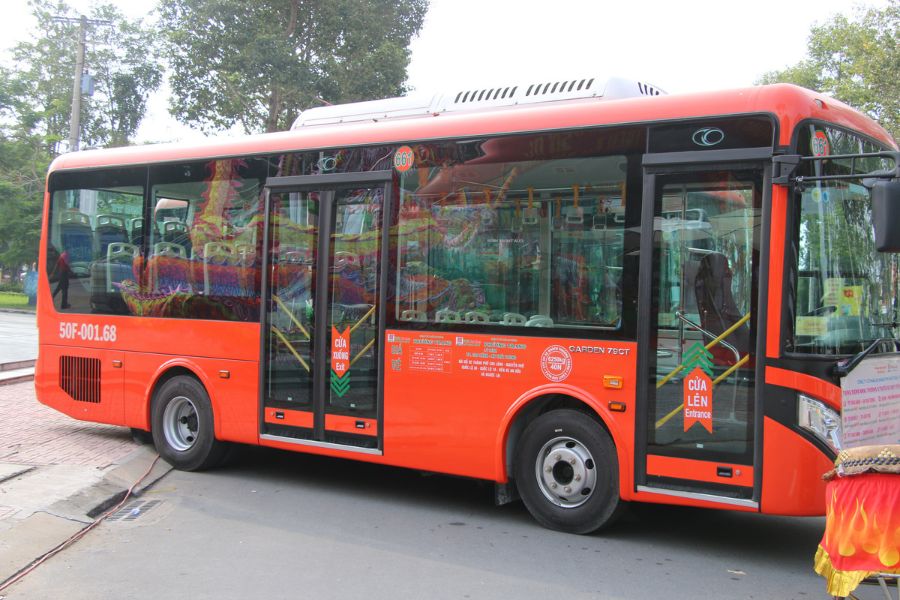
Taking bus to Dong Thap from Ho Chi Minh (Source: baonld)
Dong Thap is an ideal retreat for any traveler in search of a serene getaway in the lap of nature and culture. Being very close to Ho Chi Minh City, Dong Thap cannot be left out by any traveler keen on experiencing the unadulterated flavors of the Mekong Delta. Plan your trip now with Asia King Travel and witness the marvels of this interesting province.
Read more: Tram Chim National Park Tour 2 Days: Serene Birdwatching